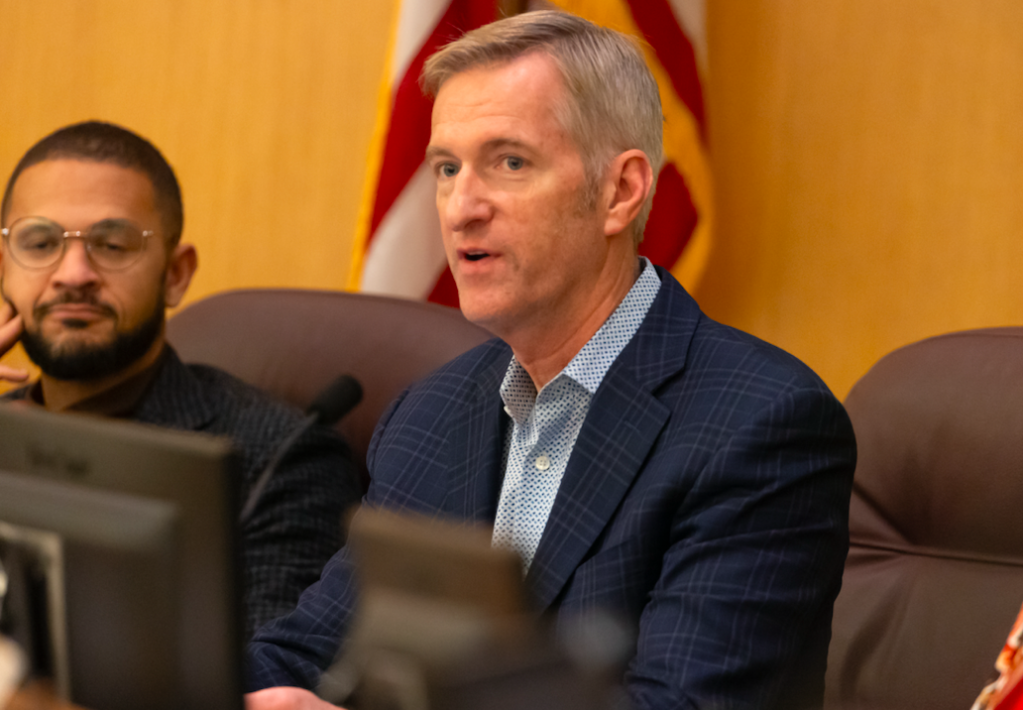The terms you’ll need to know for the all-new Portland city elections
Published 5:00 am Wednesday, October 16, 2024

- Ted Wheeler will be the last person elected under Portland’s century-old city commission form of government.
Voters will hear a lot of familiar and not-so-familiar terms bandied about in this year’s Portland city races. The city of Portland offers a good website of explanations at portland.gov/vote. Here are a few of the terms you’ll need to know.
Trending
Ballot for ranked choice voting
Everyone will get a ballot with bubbles to be filled in.
For instance, in the mayoral race, 19 people are running. Voters will be asked to rank the 19 candidates from their first choice through their sixth.
Voters aren’t obligated to fill out all six. You could pick just one, or two, or all six: your call.
If no one wins outright, and if your No. 1 choice gets the least number of votes and gets eliminated, your vote switches to your No. 2 pick. If that person subsequently gets eliminated, your vote switches to your No. 3 pick. And so on.
Ballot for traditional voting
Portlanders will still be asked to fill out a traditional ballot for candidates and measures related to school districts and special service districts. That means, when your elections envelop arrives in the mail, it will contain a traditional ballot, a ranked choice voting ballot, and instructions for both.
City Charter
Once per decade, the Portland City Council would appoint a 20-person commission to review the city charter. That document is similar to a state or federal constitution; it outlines how things must work on a day-to-day basis as the city functions.
The last Charter Review Commission recommended changing the roles of the mayor and City Council, and the adoption of ranked choice voting. Those reforms were passed by voters in 2022 with a “yes” margin of 57%.
City Commissioners vs. City Councilors
In the past, the mayor and four city commissioners each oversaw one or more bureaus within the city; that’s why they were called “commissioners” and not “councilors.” Under the commission model, a member of the City Council had both a legislative function (voting on ordinances, hirings, the budget and more) and an administrative function (overseeing a specific bureau, such as the police, fire and rescue, or parks).
That administrative function has been eliminated. And the office-holders’ titles will be city councilors, and no longer city commissioners.
City Council, new
In 2025, Portland will go from four city commissioners to 12 city councilors. And the councilors will be elected from four geographic districts within the city (See below).
Each district will have three councilors. So if you live in, say, the Sellwood neighborhood, three members of the council will serve your sector of the city.
City Council president
Once these 12 people are elected, they will select a council president. If a councilor wants the body to vote on some specific policy, the council president would have to sign off first.
The council president likely will be the public face of the city council. He or she, and the mayor, are likely to become the best known elected officials. And their roles could be compared to a statewide body: The mayor will serve much as the governor does, while the council president would be akin to the speaker of the house or senate president.
City Districts
This is a map of Portland’s four new districts. With this, voters can tell which district, and which city councilors, serve their neighborhood.
City Manager
This is a position that never existed in the last half century in Portland, but is popularly used in many cities throughout Oregon and the United States.
The city manager will be the city’s top administrator.
The administrator will have an assistant city administrator and six deputy city administrators working beneath them, each assigned to oversee a cluster of similar city offices.
Mayor, new duties vs. old duties
Up until now, the mayor and four commissioners sat together in council chambers and voted together. No longer.
The mayor won’t sit with the council, and won’t even get a vote, except to break a tie.
It’ll be the mayor’s job to work with the city administrator. Their jobs will be to carry out whatever policies the council approves. They also will draft the annual city budget.
While the mayor will get to appoint the city manager, city attorney, and police chief, it’ll take a vote of the City Council to approval those nominees. Much like the Legislature approves the governor’s Cabinet nominees.
The mayor also has overseen one or more bureau, such as police or transportation. No longer. A city manager and his or her deputy managers will do that.
The same is true for the city council; they no longer will oversee bureaus.
Multi-winner election vs. single-winner election
The mayor and city auditor will be picked vis a single-winner election. To put it simply, we’ll have only one mayor and one auditor.
But since the city’s four districts will have three councilors each, they’ll be picked via multi-winner elections. If you live in, say, Multnomah Village, you’ll have only one mayor and one auditor, but you’ll have three councilors representing your neighborhood.
Number of candidates
In the past, Portland mayoral or city commissioner races saw lots of candidates queue up for a May primary. If someone did slightly better than 50% of the vote, we had an immediate winner. If no one passed that mark, the top two would face off in a November general election.
But May primaries now have been eliminated.
And with all the vast changes that happened this year, a whopping 117 people have thrown their hats into the ring to serve the city of Portland. That includes 19 people who want to be mayor and 98 running for City Council.
Threshold
In a single-winner election, such as mayor and auditor, a candidate must get 50% plus one vote to win. If that happens on election night, it’s game over: We have a mayor or auditor.
If no one crosses that threshold on the first round, the person with the least number of votes is eliminated. Everyone who picked that person as their No. 1 choice will see their votes shifted to whomever they picked as their No. 2 choice.
The race is tallied again. If no one crosses the 50%+1 threshold, the person in last place is eliminated, his or her votes distributed to other candidates, and the votes are counted again.
And again and again and again: as many times, and for as many days, as needed for someone to cross the 50%+1 threshold.
For the City Council races, where each district will have three winners, the threshold mathematically is 25% plus at least one more vote.
It’s likely that no three candidates cross that line on election night; remember, 98 candidates are running for 12 seats.
If no one crosses 25%+1, the person in each district who’s in last place is eliminated, votes redistributed, and the tally done again. And this could happen over and over, until three people in each district cross that threshold.
When will we know who’s mayor and who’s on the City Council?
No one knows. But it could take several days.






